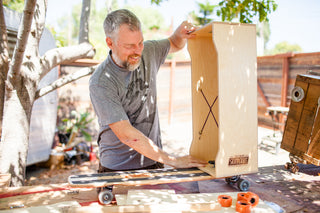Have you ever seen the movie “Falling Down?” I was Michael Douglas on my two-hour trek out to Oceanside, disbanding Los Angeles’ balmy grasp to powwow with one of the originators of skateboarding and ramp-building as we know it, Blockhead Dave. Recognized for his innovative entrance into the skate market in the ’80s from his parents’ garage, Dave was never held back by resources, turning $3,000 into a legendary installation in the skate community with Blockhead, then subsequently Invisible and Sixteen.
As you get into it with the disarming Dave Bergthold, you get the impression that he’s never been OK fitting into someone else’s mold. I sat down with Dave to peel back the layers on the DIY mentality has guided him through prideful chapters of making and selling skateboards for a living, designing mind-blowing skate installations for FuelTV, and now launching his latest do-it-yourself skate project, Skate Crate.
Check out the Skate Crate Kickstarter HERE.
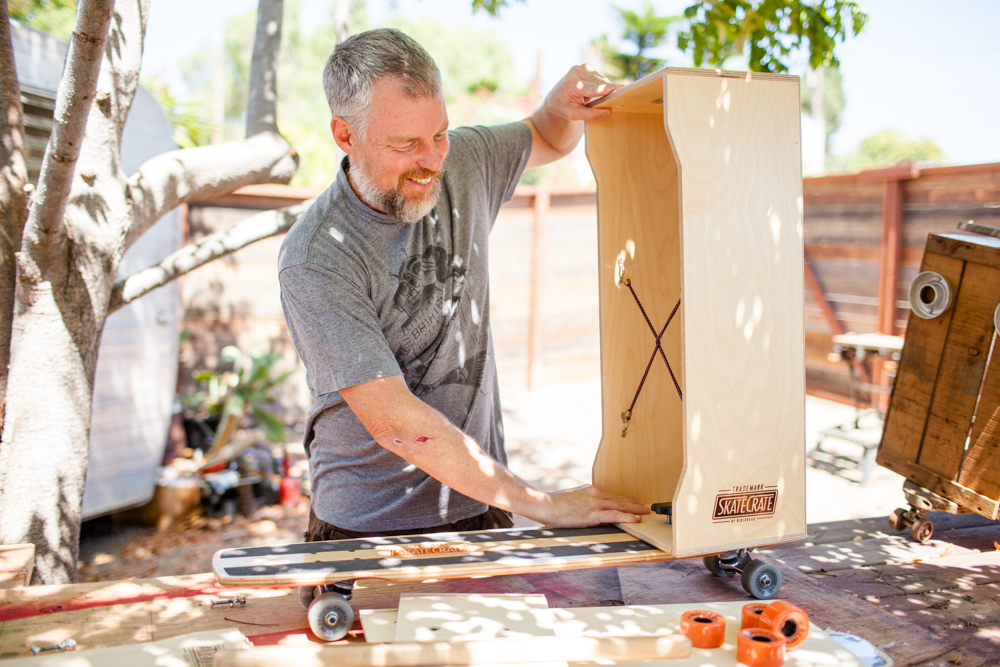
::
MAC: Can you tell us a little bit about how you came up in the skateboarding industry?
DAVE: Yeah, I grew up in Northern California, Sacramento area, in a place called Roseville. I started skateboarding when I was ten years old. Went down to my grandfather’s house and my cousins all had skateboards and I was like, “I want one too.”
My grandfather had made skateboards out of some old shelf pieces salvaged from the post office. This was 1974. He went down to the auto parts store [where] they sold the trucks and wheels with the loose ball bearings and stuff in the little package [and] made me my first skateboard at 10 years old. After that, I got into it. Then my cousin built a ramp and showed me how to build ramps and stuff, so I just kind of got into building stuff – I was always building ramps. I was going to become an architect, but then I decided I wanted to work in skateboarding.
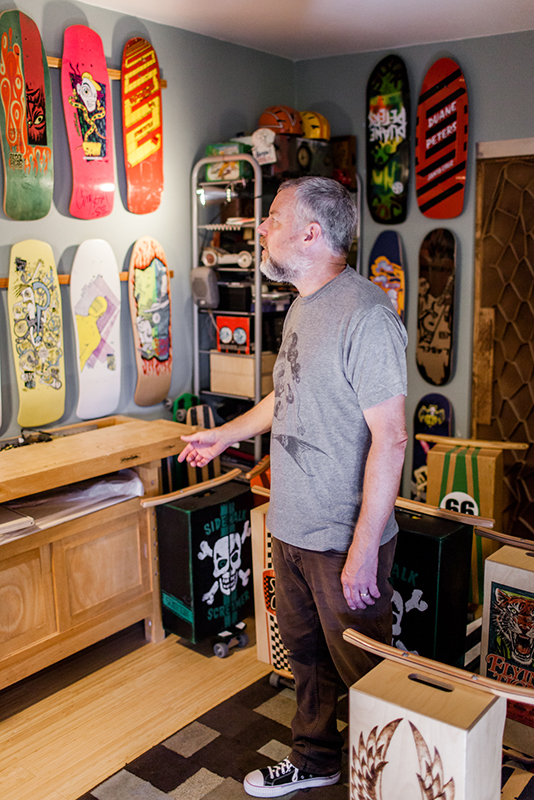
DAVE: At that time, skateboarding was absolutely fucking dead. There was no skateboard industry, there was Thrasher but it was just black and white; pretty much a zine. I had never worked at a skate shop or anything, [laughs] but I was like, “I want to do something in skateboarding… So I’m just going to do it myself.” I took a couple business classes at community college… Then with $3000 dollars I [had] saved up from delivering pizza and a little money from my parents that was supposed to be for if I kept going to college – in my parents’ garage in 1985, I started Blockhead Skateboards and ran it out of a garage for about a year.
The funny part was that I was like, “I have to do a full page ad in Thrasher.” Like 1000 of my 3000 dollars was going to an ad in Thrasher. Everyone’s like, “You’re crazy, why would you spend all that money on a Thrasher ad? Why don’t you just get it started and get a quarter page?” I was like, “No one’s going to take me seriously if I don’t have a full page. I look in Thrasher and I see the companies with quarter page ads and I don’t take them that seriously. I want people to take me seriously from the start. I’m going to roll the dice and spend a third of my money on one ad. Then I’m going to get one batch of boards and see how it goes.”
I had sponsored locals – Sam Cunningham, the best dude in Sacramento. Then I sponsored some other guys as well and licensed the company to a tracker in ’89. That’s what brought me down to Oceanside area. I had a place by Fallbrook, kind of where Tony Hawk has his place. That’s the “Legendary” – when people say “the Blockhead ramp,” that’s the one they’re talking about.
Tell us a little bit about the Blockhead ramp.
I licensed my company. All of a sudden I had a lot of money freed up that I made. Because before, it was all tied up in inventory. So I had that money and I was like, “I’m going to buy a house.” I went to a realtor and was like, “I need a house with enough property because I want to build a ramp.”
So that was the place I found that I could do that. I wanted a ledge for me to ride and the team to ride and to film the video – we were going to do our first Blockhead video, Splendid Eye Torture. We wanted that to be the big feature for the video, the ramp. The video had lots of street skating and skating other places, but it definitely featured the Blockhead ramp pretty heavily.
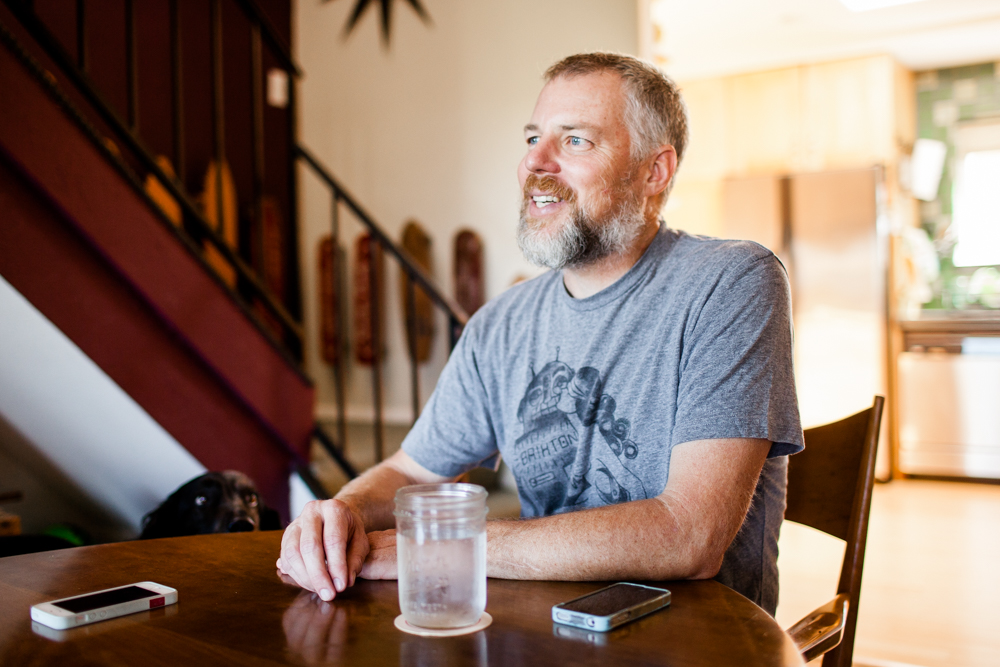
The ramp building is what eventually brought you to Built to Shred, right?
Yeah, eventually. I guess I got out of the skate industry. I did Blockhead and lasted until about ’95 and then overlapped with Invisible. I did Invisible and the first three pros were Laban [Pheidias], John Reeves, and Jamie Thomas on Invisible. Ran that, and then as a side project to that I did Sixteen Skateboards.
The whole idea of that was supposed to be a farm team for Invisible, just geared toward kids that were under 16. That was the first company out there to really be a company for kids. The idea for that was the kids were only on the team until they were 16 and then at that point, Blockhead turned into an old school brand in a way. At that time it wasn’t cool – nothing old school was cool at that point. No one wanted anything to do with vert skating, nothing to do with any of the pros or companies. Nobody wanted anything to do with Santa Cruz and Vision – any of those companies were dead to kids. They only wanted something that came out within the last six months.
Was Invisible a response to that?
Yeah, Blockhead was considered too old school at that point, so Invisible was our new thing. So then I did start doing some Blockhead stuff. You couldn’t buy a board that was over 8 inches wide at that point. Nobody wanted to put one in their line because people would be like, “Oh, you’re old school, that’s not cool.”
So I was like, “Well, I’m going to make some bigger boards then.” So I started making bigger boards through Blockhead and did some big ones with side cuts and long boards and stuff. So it was the first retro brand in a way.
Then all of a sudden, after doing that for a year or two, then Real and all these companies started making big boards again. We just didn’t have the resources or vision to achieve that and keep that going and compete. So I was definitely held back by resources. So that went away at that point.
But I kick myself now because I’m like, “I was onto something!” But I just couldn’t keep it going in the right direction.
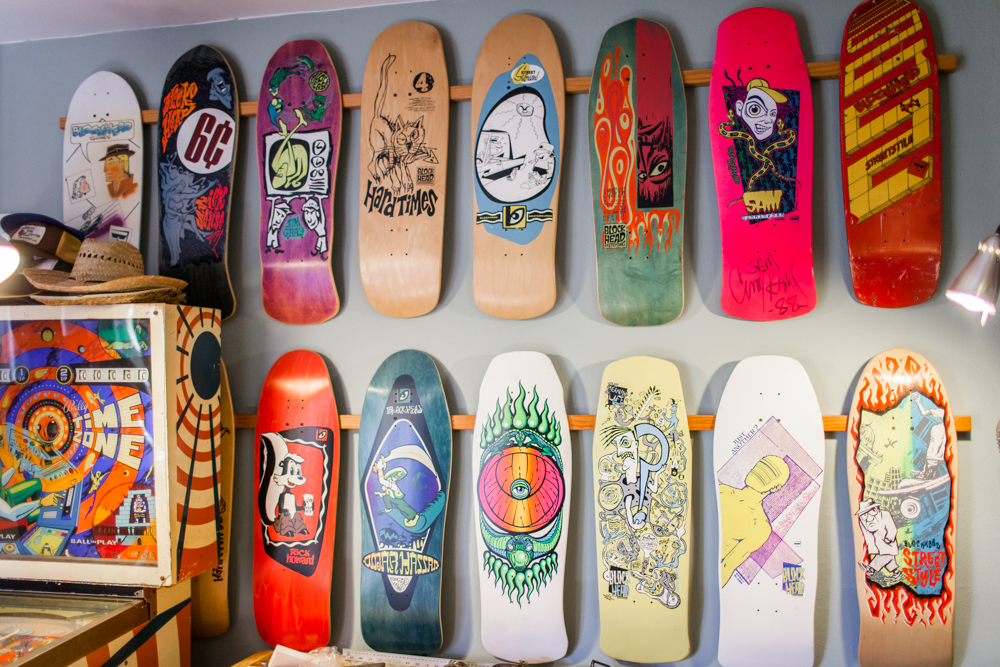
How did working on TV get put in the mix?
That was just my fallback plan. When I stopped doing skateboards at that point, I had made a bunch of skate videos and had video and editing equipment and stuff. So I didn’t know what to do, I looked around and was like, “Maybe I could work for another company,” but that was during the recession in skateboarding. It fell in my lap in a way where someone was like, “Oh, there’s this TV show that needs some more video guys.”
So I just ended up there on this thing called Invert TV that was on Fox Sports.
How did Built to Shred evolve out of that?
Well, the whole thing – Laban who rode for me the longest anyone had rode for me was on Blockhead back from ’90 up until Invisible folded. He was actually a partner in Invisible. So [they] did this thing called Create a Spot. Those guys bought the contract to do American Misfits because Laban had done that video previously – him and Wee Man did American Misfits and then he signed a deal with Fuel TV to do American Misfits as a TV show.
They had pitched a build show for Fuel and then they were like, “We’re going to put in a three minute segment into American Misfits as the last segment.” So they tapped me to do it because I’ve always been building – not just ramps, but weird stuff to skate. I’ve always been into building these weird creative things.
We actually had an Invisible campaign. It was probably the first studio set up. Everyone’s done it since then, like Nike and Mystery, DC, you name it, everyone’s done some sort of a studio-based skateboarding campaign. But I think we were the first to do it. We had this backdrop and just brought stuff in. Laban was jumping over a farm tractor and Mumford we have this carpet genie thing. It’s like a fiberglass sculpture thing that was on a carpet store, so he was holding up a ledge and Mumford was grinding across that.
So I was already doing stuff like that – that was already in my mind. Jeff was doing the flat bars or whatever and building ramps, he was the personality and I was the guy behind the show. [In] he first two seasons of American Misfits, it was just Jeff and I doing everything. I’d come up with ideas, and he’d build them.
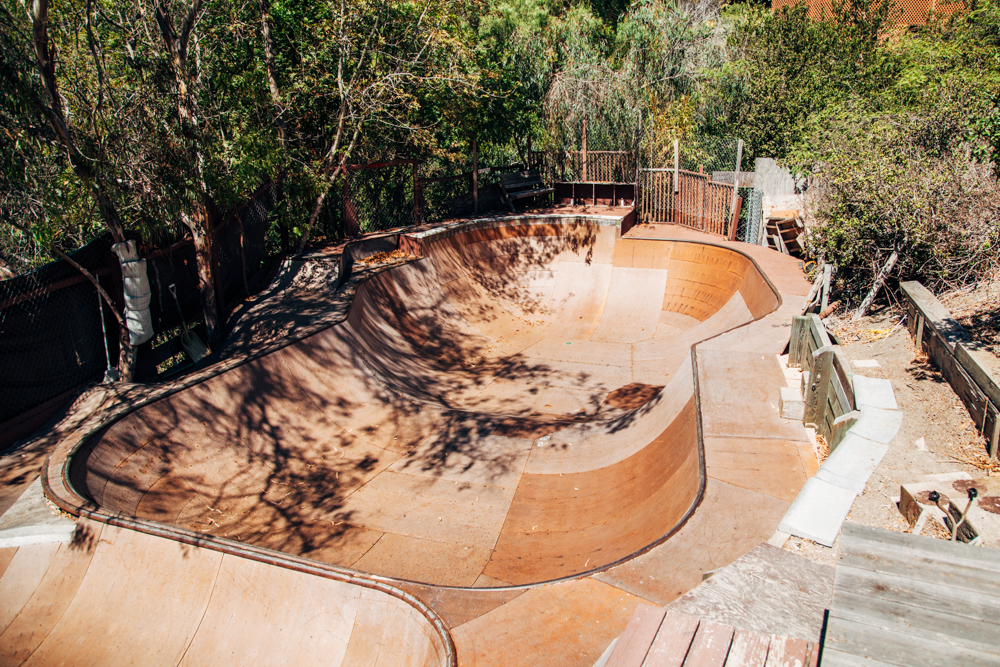
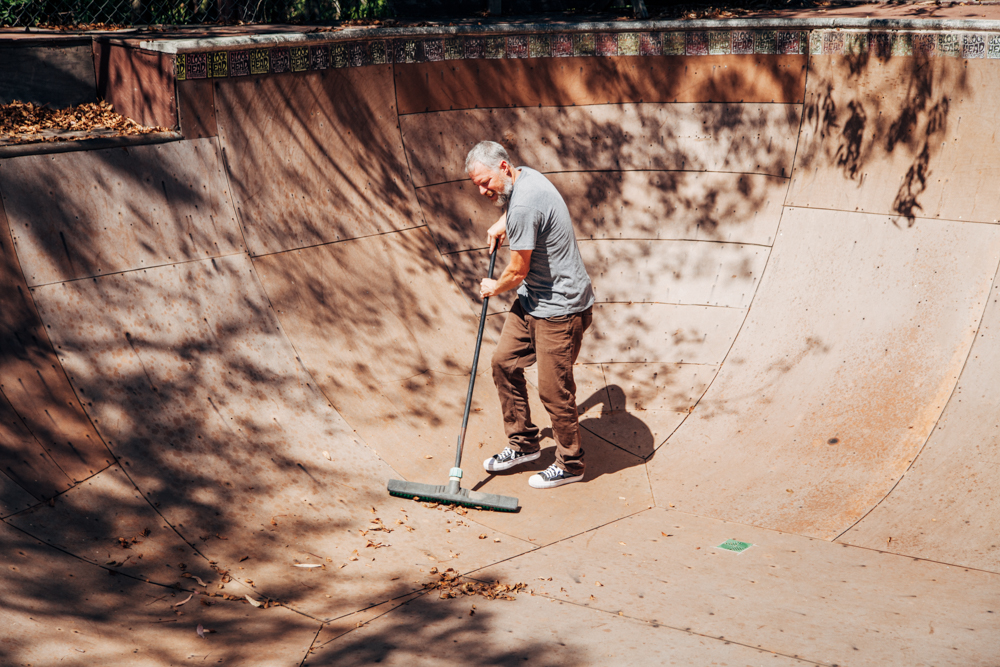
What were some of your favorite ideas?
When we were just doing the segments, we did some fun things, we made the shopping cart ones where we got some shopping carts and made a mobile skate park. That was fun, you just pull them up and they unfold into this mobile skate park.
Then as far as Built to Shred, when it was a show, I think the one thing that stands out the most was building the tree-fort half pipe at the Volcom house. Volcom had a similar situation where they were on a piece of property right in the heart of Costa Mesa where the landlord was going to tear down the house eventually to build 30 condos. So they rented it to the Volcom guys with the assumption that, “This house is a piece of shit, we’re not fixing it up, don’t call us if something breaks. You’re just here until I sell it.”
So we went up there and talked with Remi and just looked around the property trying to find something and he just looked up and saw these four 100 foot tall eucalyptus trees just spread out just right.
I had this dream for years before that of building a half pipe in a tree. I kind of envisioned more of a big tree that had branches going out and building a six foot wide, but tiny little half pipe, [just] so I could say, “I put a half pipe in a tree.” We built this half pipe that was at least 16 feet wide. It was a full-on real half pipe. The flat bottom was 20-something feet off the ground – it was gnarly. The scary part was we put a 4×4 piece of Plexiglass in the middle of the flat bottom. I was nervous about that, people assured us that you can’t break it. But just the first time, someone’s trying to do a foot plant on a tree, sticking, and slamming right with his face looking right down 20 feet.

So your business is primarily filmmaking now?
It’s mostly film stuff – video production. I definitely got hit hard with the end of Fuel because that was where 3/4s of my time was going; either Built to Shred or other Fuel shows. So it’s been a little scrappy the last couple years.
Blockhead’s still around, right?
Yeah, I would call it a hobby business at this point where for the last ten years, I don’t have a team or any advertising. It’s just whenever I have a little extra money to make some boards. It’s actually been a couple years since I’ve made anything.
But then that all led, I guess, to the Skate Crate project. Just wanting to do something again and the skate market is so over-saturated and there’s just not room for me to do anything [Laughs]. That’s why I was like, “What else can I do that’s cool and that’s fun?” I was always about doing things that are fun, you know? That’s one thing that people say about Blockhead –we were a fun company. Everything was about having fun.
Skate Crate is really trying to push the DIY mentality. They can design their own artwork and do whatever they want. Jason Adams proved what you can do with these things. I’m so stoked that he came down and was able to do that.
There’s something alluring about making something real and analog in a world so pre-composed.
Kids are learning. I learned from my grandfather – his saying was, “If you don’t have what you need, use what you got,” or something like that. He grew up in a different era, back then going up to the Depression and all that, if you wanted something and you didn’t have the money, you had to make it yourself – you had to improvise.
He had a giant shop and he would just never throw anything away. We’d drive around with him and every time he went out all of a sudden it was like, stop, back up, car door open, reach out, and grab just a bolt or something. He couldn’t pass anything up. He just collected all this stuff and then when he needed something he had his own mini-Home Depot of salvaged goods and crap.
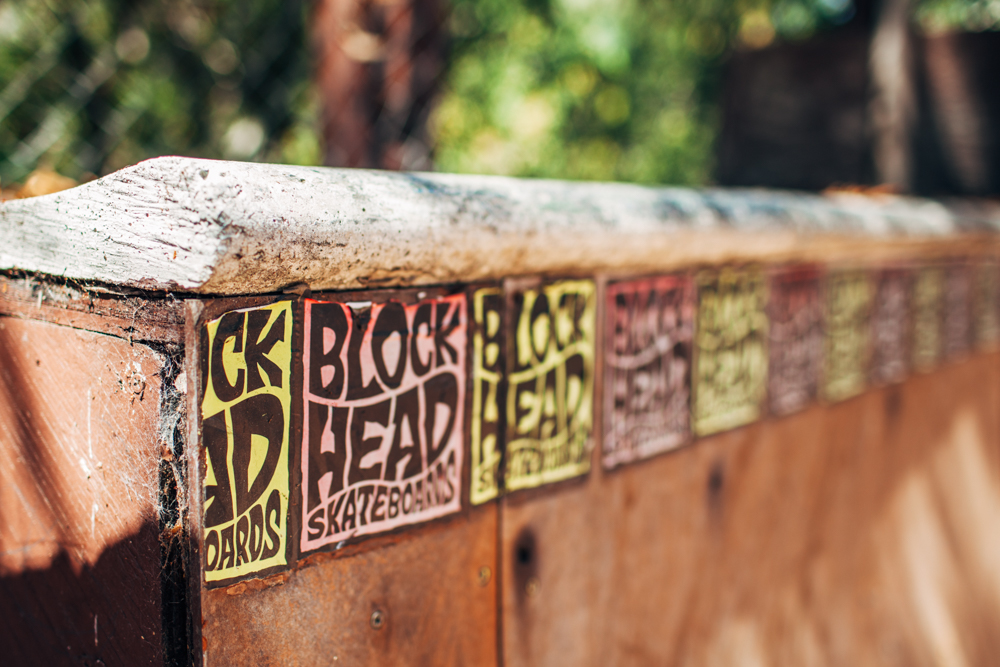
I don’t see a whole lot of kids really building anything anymore.
Yeah, it’s not really in kids’ minds. Another thing about the Skate Crate is the first pictures that I’ve seen of it were 1910, so it goes way back. It goes back way farther than I thought, so I was like, “Oh, maybe it was ‘20s or ‘30s,” because those were all the photos I saw. Then, all of a sudden, I stumbled upon [one that] was unmistakably from that era. Just the way everyone’s dressed and there’s a policeman standing there watching three kids about to race, a whole crowd around them, and it was the most epic photo.
So I’ve just taken that back to the roots of skateboarding. From 1910 up until the early ‘60s, kids were doing this. I wasn’t alive then, so I don’t know if it was a constant thing or if it came and went or were popular in different areas of America. Supposedly kids were doing it over in Europe, too – in France.
So just the fact that it was a working class thing for fun, [that] it wasn’t this thing that you can go down to Sears or some company and buy this thing. You built it yourself. It was all DIY and the kids took it to that next level. Some kids just had the super basic box or whatever cruised down the street. But some kids would take it to that next level and they’d put their racing numbers on it or paint a skull on the front or they’d do streamers coming off the handlebars. One of the popular things was doing the tin cans for headlights and they’d find an old license and put it on it. The kids would use that for their artistic expression and customize it.
Legend has it that it was the kids who had the Skate Crates – [and] once they saw surfing, they were like, “Oh, that’s cool, I want to stand on it and pretend I’m surfing.” Then they pulled the crate off and skateboarding was born. Then after the kids were doing that DIY style of skateboarding, then someone’s like, “Oh, I could make a commercial product and make money” [laughs].

What sparked the idea of bringing back Skate Crate?
Backtrack ten years then to the first time that I made what you would consider a “Skate Crate.” My brother was getting married and so we were like, “We’ve got to come up with something fun for the bachelor party.” I [said], “Maybe we should do a bar crawl.” Then it was like, “What can we do? We don’t want to drive around, we want to drink.”
Then there were a couple people that weren’t really skaters that were in it and so were like, “Well, we can’t skate around people are going to slam and stuff, it’ll be dark. We need something a little different.” Bicycles were too much of a hassle.
For some reason, I had this idea. “Let’s make old skate crates.” I tried to use whatever scrap wood I had and I didn’t have enough wood to make boxes, so they were more wedges [and] triangles. I got these metal bars for the handles. I told everyone, “Bring some trucks and wheels, I’ve got all the stuff, and bring some spray paint and whatever you want.” It was fun. We spent the whole day up at my friend’s house in LA drinking and painting them up all crazy with racing numbers on the front and all this stuff. When it was time to go we just bombed down this hill to six or seven bars that were all down this street and ended up at a strip club after the last one.
We have some pretty classic pictures, like, my buddy’s friend, a professional photographer, decided to come along for the ride… In some pictures, [we] have all ten of these things outside of a bar. It was just fun, we were riding around like little kids pretending to be a motorcycle gang.
Did people look at you weird?
Yeah, people were just turning heads and stuff – it was a fun time. Since then, it’s always been on my mind. At first, when I started developing this, I was like, “I’m just going to somehow do trucks and wheels that look like clay wheels and metal wheels not with any wood, just sell them with instructions.” That was my first thought and… Once I had a kid then I was like, “Oh, father and son project, something to do.” Then I was like, “Well, why not just do the whole thing.”
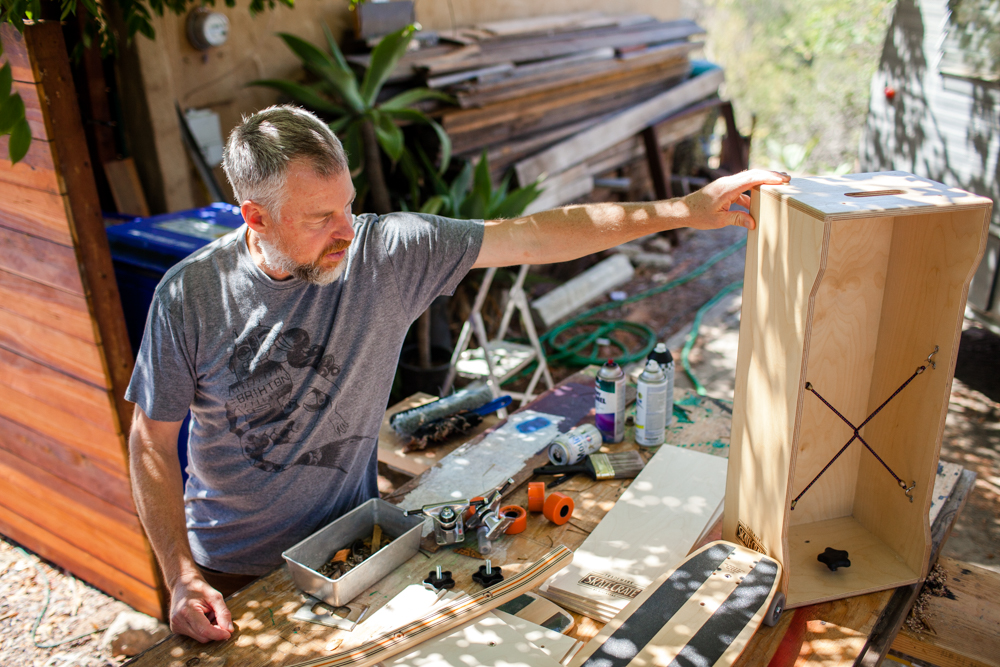
So why did you choose Kickstarter to launch it?
I wasn’t going to at first. I was resistant to using Kickstarter. I was like, “I’m just going to do it.” And then I had people saying, “Use Kickstarter, use Kickstarter!” It’s like a way to expose a whole new market to them, but I’m still on the fence because if you look at our stats we’ve brought in – as far as people looking at it – it’s been 75% or more from us. From us sending out Facebook or direct emails, it’s pretty much word of mouth. Kickstarter hasn’t brought us that many orders, so we probably could’ve… But it definitely helps with the hype and the fact that you have a limited time to do it. It’s helped us.
What is your end-goal with the project?
I don’t see this as a mainstream thing. For all, it’s attributes and the cool things about it, it does have some limitations. For one, you can’t pick it up and carry it around, it’s a little bulky, you have to lock it up somewhere. That could be a limitation. Kids are riding those Penny plastic boards because they can put it in their backpack and stuff. It doesn’t have portability so we’re not going to sell as much as Penny is selling.
I don’t have delusions of grandeur that I’m going to do that or something, I just want to. I figure it’s an untapped niche market and if I can kind of own that market even – if someone copies me and does it, I just want to be the guy that started it and does cool things with it. I want to do an online web series, things that we did with Jason Adams, how artists come over and doing features on artists and things; just get weird with it.
Because that show Built to Shred, I was creative director on that, so most of the things that you saw on that show were things that I dreamed up. So just kind of – I haven’t done that in a few years so I’m just looking for another outlet or opportunity to get weird. Just design weird, fun crates. Put in stereo systems, make a dog house one, [laughs] just fun things.
I’m trying to be timeless and back to the roots and people that are into the vintage style and Americana – just tapping into that.
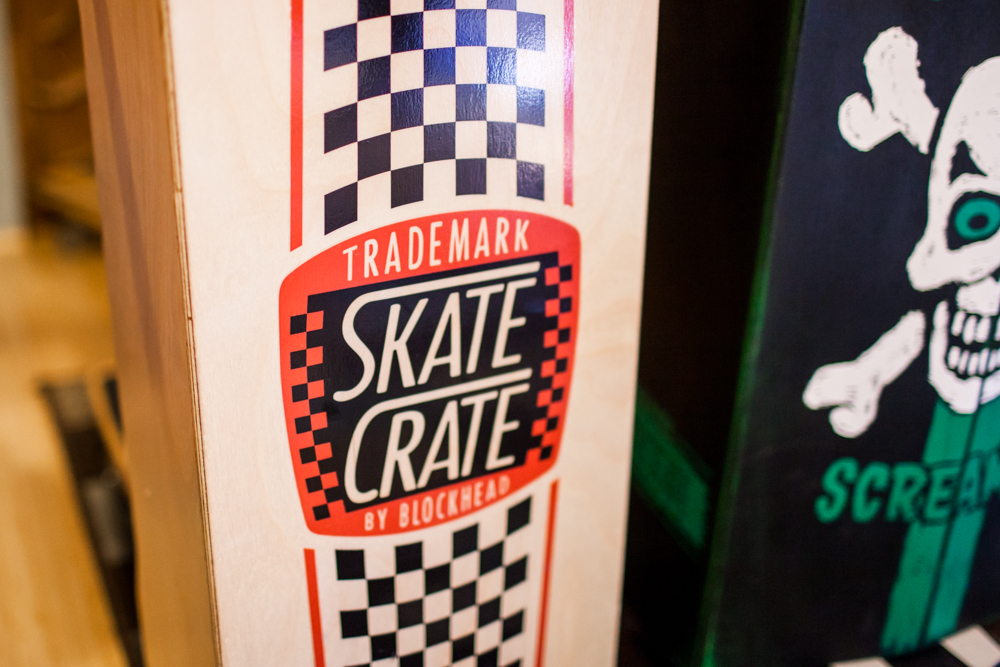
I wonder how many dads have seen this project and went home and tried to make one themselves.
Well, exactly actually, I don’t want people to think, “Oh, I have to buy a Skate Crate brand one.” It’s like, “Yeah, get an old crate or a piece of plywood and make your own.” I want to promote the idea that – the DIY. Not everyone has to, I think mine are cooler than a homemade one, but –
And maybe they’d transition in the same way. They’d eventually take the crate off and start skating.
Well, of course! When I went up to Jeremy Wray’s house when he did that, his kid was riding it and he’s like, “He’s never stood and ridden a skateboard before.” For a really young kid that could definitely be the bridge between a play thing and a real skateboard.
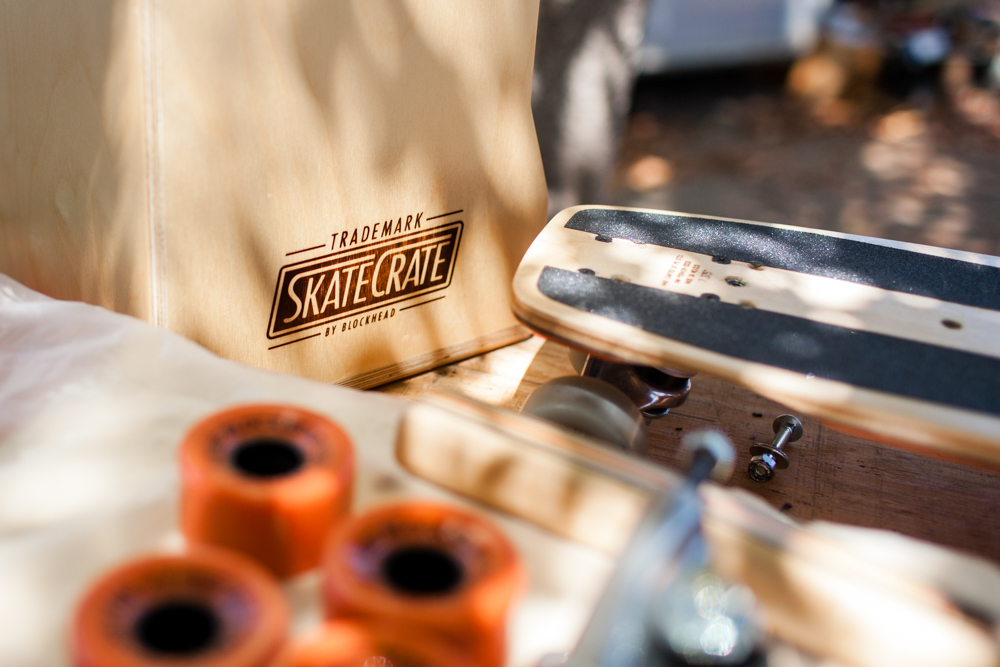
::
Support the Skate Crate movement by contributing to Dave’s Kickstarter.

